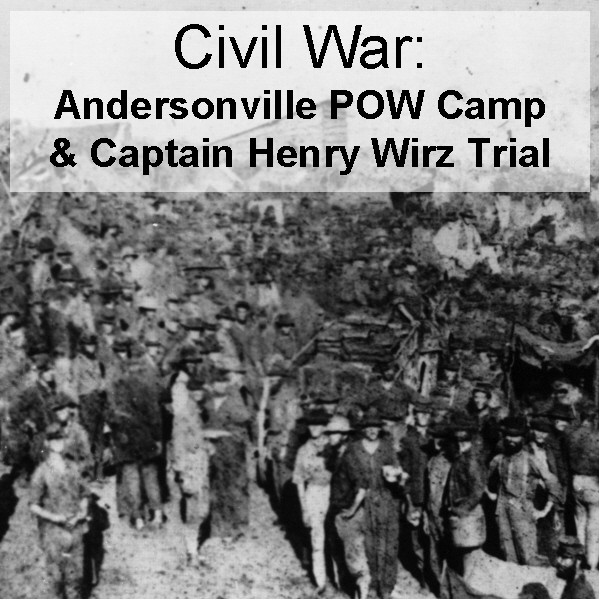
Civil War: Andersonville POW Camp & Captain Henry Wirz Trial Documents
$19.50
Description
Andersonville: Timeline, People, and Trial
Detailed Timeline of Main Events:
- During the American Civil War (1861-1865):The Union and Confederate forces take a large number of prisoners of war. Estimates suggest 194,000 Union soldiers and 214,000 Confederate soldiers became POWs.
- Early in the war, a system of prisoner exchange is established between the two governments but later fails due to disagreements.
- As the war progresses, the number of prisoners increases significantly, leading to severe overcrowding and inadequate resources in prisoner-of-war camps on both sides.
- Conditions in POW camps deteriorate due to mismanagement, lack of planning, retaliation, and shortages of supplies. This leads to significant suffering and high mortality rates among prisoners.
- February 1864: Andersonville Prison (Camp Sumter) begins operating in Georgia.
- August 1864: Photographer A.J. Riddle visits Andersonville and takes the only known photographs of the prison during its operation.
- During its 14 months of existence, Andersonville accounts for approximately 43% of all Union deaths during the Civil War. Around 30,000 Union soldiers die in Confederate prisons overall.
- Mortality rates are also high in Union prisons, with approximately 26,000 Confederate soldiers dying in Union POW camps like Camp Douglas.
- Confederate surgeon Joseph Jones, M.D., conducts research on the diseases among prisoners at Andersonville.
- Dorence Atwater, a Union prisoner working as a clerk in the Andersonville hospital office, secretly copies the Confederate death register.
- Early May 1865: U.S. Cavalry Captain Henry E. Noyes arrives at Andersonville with orders to arrest Captain Henry Wirz.
- Late May 1865: Captain Henry Wirz is taken to Washington D.C. by Captain Noyes.
- Summer 1865: An Army expedition, accompanied by Dorence Atwater and Clara Barton, visits Andersonville.
- 1865: Publication of “Life and Death in Rebel Prisons,” one of the first books to detail the experiences at Andersonville for a national audience.
- August – October 1865: The military commission trial of Captain Henry Wirz takes place in Washington D.C., presided over by General Lew Wallace. Nearly 150 witnesses, including former prisoners, civilians, and Confederate officials and guards, testify about the conditions at Andersonville.
- November 1865: Captain Henry Wirz is convicted of conspiracy and murder.
- November 10, 1865: Captain Henry Wirz is executed by hanging in the courtyard of the Old Capitol Prison in Washington D.C. Photographer Alexander Gardner documents the execution.
- 1866: Publication of “A List of the Union Soldiers Buried at Andersonville,” based on Dorence Atwater’s secret copy of the Confederate records.
- 1867: Publication of “Contributions Relating to the Causation and Prevention of Disease, and to Camp Diseases; Together with a Report of the Diseases, Etc., Among the Prisoners at Andersonville, GA,” by the U.S. Sanitary Commission, including Confederate surgeon Joseph Jones’s report on Andersonville.
- 1869: Publication of the “Report on the Treatment of Prisoners of War by the Rebel Authorities During the War of the Rebellion” by a House of Representatives committee, containing interviews and statements from former Union POWs and civilians.
- Various Post-War Years (e.g., 1879, 1891, 1892): Publication of memoirs and historical accounts about Andersonville and the trial of Henry Wirz, often reflecting different perspectives on his guilt and responsibility.
- 1968: Publication of the “Military Law Review Vol. 68 Article – Hell And The Devil Andersonville And The Trial Of Captain Henry Wirz, C.S.A., 1865,” analyzing the legal aspects of the trial.
- 1970: Publication of the “Andersonville National Historic Site Historic Resource Study,” a comprehensive history of the prison.
- 2012: The Andersonville National Historic Site produces “The Trial of Henry Wirz – A Mock Trial Lesson Plan Examining the Laws of War,” indicating ongoing historical and educational interest in the events.
Cast of Characters and Brief Bios:
- Captain Henry Wirz: The commander of the Confederate prisoner-of-war camp at Andersonville. After the war, he was tried by a U.S. military commission for conspiracy and murder related to the deaths and suffering of Union prisoners. He was convicted and executed in November 1865. He remains a controversial figure, viewed by some as a scapegoat and by others as a war criminal.
- Jefferson Davis: The President of the Confederate States of America. He was implicated in the conspiracy charges against Henry Wirz, with the prosecution aiming to show that Wirz was acting under orders from higher Confederate authorities.
- Howell Cobb: A prominent Georgian politician and Confederate general. He was named in the conspiracy charges against Henry Wirz.
- John H. Winder: A Confederate general who served as the Commissary-General of Prisoners for the Confederacy. He oversaw the Confederate prison system and was also implicated in the alleged conspiracy related to the treatment of Union prisoners at Andersonville.
- Richard B. Winder: Likely related to John H. Winder (possibly his son or another relative), he was also named in the conspiracy charges against Henry Wirz, suggesting involvement in the administration or operation of Confederate prisons.
- W.S. Winder: Another individual named in the conspiracy charges against Henry Wirz, likely holding a position of authority within the Confederate prison system.
- Isaiah H. White: Named in the conspiracy charges against Henry Wirz, his specific role in relation to Andersonville is not detailed in the provided text, but he was implicated in the alleged plot to harm Union prisoners.
- R. Randolph Stevenson: Another individual named in the conspiracy charges against Henry Wirz, suggesting involvement in the conditions or management of Andersonville.
- Captain Henry E. Noyes: A U.S. Cavalry Captain who was ordered to arrest Captain Henry Wirz at Andersonville in May 1865 and subsequently took him to Washington D.C.
- General Lew Wallace: A Union general who presided over the military commission that tried Henry Wirz.
- A.J. Riddle: A photographer who visited Andersonville in August 1864 and took the only known photographs of the prison during its operation. These photographs became important evidence of the conditions within the camp.
- Thomas O’Dea: A former Union prisoner at Andersonville who created 21 drawings of the prison, providing visual documentation of the camp’s layout and conditions.
- Dorence Atwater: A Union prisoner held at Andersonville for eleven months. He worked as a clerk in the hospital office and secretly copied the Confederate death register. This list later became crucial for identifying the Union soldiers who died at the camp. He accompanied the Army expedition to Andersonville in the summer of 1865 with Clara Barton.
- Clara Barton: A prominent humanitarian and nurse who accompanied the Army expedition to Andersonville in the summer of 1865. She played a key role in identifying and marking the graves of Union soldiers buried there, utilizing Atwater’s list.
- Father Whelan: A Catholic priest who ministered to the prisoners at Andersonville, providing spiritual comfort and assistance. He is recognized in National Park Service fact sheets about the prison.
- Joseph Jones, M.D.: A Confederate surgeon who conducted research on the diseases affecting prisoners at Andersonville. He wrote a report on his findings, which was later included in a publication by the U.S. Sanitary Commission. He reportedly attempted to suppress this report at the end of the war.
- Alexander Gardner: A well-known Civil War photographer who took photographs of the execution of Henry Wirz in Washington D.C. on November 10, 1865.
- Union POWs (Numerous): The text mentions nearly 150 former prisoners testified at the trial of Henry Wirz, detailing their experiences and the conditions at Andersonville. Their testimonies were crucial to the prosecution’s case.
- Confederate Officers, Officials, and Guards (Numerous): Many individuals from the Confederate side also testified at the Wirz trial, providing varying accounts of the conditions and responsibilities at Andersonville.
Civil War: Andersonville POW Camp & Captain Henry Wirz Trial Documents
4,973 pages of documents, histories, and photographs related to Andersonville Prison, a Confederate prisoner-of-war camp operating during the final fourteen months of the American Civil War and its commander Captain Henry Wirz, who was tried and executed after the war for war crimes.
Only a few Civil War figures are as controversial as Henry Wirz. To some people, he is a martyr or a scapegoat for a failed Confederacy. To others he is the vilest criminal of the Civil War. Captain Henry Wirz’s conviction and subsequent execution is still debated to the present day.
During the Civil War, it has been estimated that 194,000 Union soldiers and 214,000 Confederate soldiers became prisoners of war, more than in any other conflict in the history of the country. Approximately 30,000 Union soldiers died in Confederate prisons while the death rate was almost as bad in the North with approximately 26,000 Confederate soldiers dying in Union prisoner of war camps. Since both sides predicted a short war, neither prepared for large numbers of POWs during the four years of conflict. As prisoners were taken, commanders usually worked out exchanges among themselves. Soon an exchange system was accepted by both governments but failed to work due to a variety of disagreements that arose. The number of prisoners of war increased and prison facilities on both sides became severely overcrowded. Mismanagement, lack of adequate planning, retaliation and many other factors led to suffering by prisoners on each side. By the end of the war, camps such as Andersonville suffered from a lack of supplies and experienced extremely high mortality rates, as well as death and desertion by many of its guards. During the 14 months of its existence, Andersonville accounted for 43 percent of all Union deaths during the Civil War.
Captain Henry Wirz was still at his post when U.S. Cavalry Captain Henry E. Noyes arrived at Andersonville in early May 1865 with orders for his arrest. Noyes took Wirz to Washington in late May. General Lew Wallace presided over a military commission which tried Wirz for: (1) conspiring with Jefferson Davis, Howell Cobb, John H., Richard B., and W.S. Winder, Isaiah H. White, R. Randolph Stevenson, and others to “Impair and injure the health and to destroy the lives.., of large numbers of federal prisoners.., at Andersonville” and (2) “murder, in violation of the laws and customs of war.” Lasting two and a half months, during the course of the trial nearly 150 former prisoners, civilians, and confederate officers, officials, and guards testified about conditions at the prison.
One of the great paradoxes of the Wirz Trial is that both the prosecution and the defense sought to prove that Captain Wirz was following orders; the prosecutors hoped to convict higher ranking Confederate officials and Wirz hoped to absolve himself by passing responsibility up the chain of command. As in nearly every military tribunal, the “following orders” defense did not work. Wirz could blame the poor logistics and overcrowding on his superiors, but he could not escape his own orders and actions. He was convicted of conspiracy and murder. The sentence was carried out on November 10, 1865, in the courtyard of old Capitol Prison.
Material in this collection includes:
Trial of Henry Wirz – Report from the Department of War
This 900-page report, Published at the request of Congress, covers procedural documents and a transcript of the trial of Captain Wirz. In the words of the compiler, “It is arranged in narrative form for the sake of compactness and as being more easily read, the exact language of each witness being given as nearly as practicable. In cases where the meaning of a witness is doubtful or his answer evasive, and also where the testimony is of great importance, the questions and answers have been given.”
Photographs taken by AJ Riddle
Photographer AJ Riddle visited Andersonville in August 1864 and took the only known photographs of the prison during its operation.
Thomas O’Dea’s drawing of the Andersonville Prison
21 drawings of Anderson Prison made by former prisoner Thomas O’Dea.
Wirz Compiled Confederate Service Record.
The Compiled Confederate service record for Captain Henry Wirz.
Prisoner Photographs Associated with Andersonville
These photographs are often linked to Andersonville, even though some are not of Andersonville prisoners. Many of the famous photographs were actually of recently released prisoners from Richmond in early 1864. After the prisoner exchange cartel broke down, large numbers of Union soldiers captured in late 1863 were crammed into warehouses around Richmond and on Belle Isle.
Photographs of the Execution of Henry Wirz
Photographs taken on November 10, 1865 by Alexander Gardner of the execution of Captain Henry Wirz, at the Old Capitol Prison in Washington D.C.
Report on the Treatment of Prisoners of War by the Rebel Authorities During the War of the Rebellion (1869)
This document is the report of a House of Representatives committee which interviewed former prisoners of war and civilians imprisoned by the Confederate States of America during the Civil War. Very much a political document, the report still contains much material of interest. Beginning on page 787 of the report are transcripts and written statements of Union POWs, telling their own experiences.
Contributions Relating to the Causation and Prevention of Disease, and to Camp Diseases; Together with a Report of the Diseases, Etc., Among the Prisoners at Andersonville, GA (1867)
This report by the non-governmental U.S. Sanitary Commission is devoted to a series of medical issues pertaining to the Civil War. A third of the book is devoted to Andersonville, written by Confederate surgeon Joseph Jones, M.D. Portions of his essay are derived from the report he attempted to suppress at the end of the war.
A List of the Union Soldiers Buried at Andersonville (1866)
Published in 1866, this report provides a list of the dead at Andersonville, taken from Dorence Atwater’s secret copy of the official Confederate records. Dorence, a prisoner held at Andersonville for eleven months, spent much of his time held at the prison as a paroled prisoner, working in the hospital office as a clerk. It was in this capacity that he made a secret copy of the death register. He and Clara Barton accompanied the Army expedition to Andersonville in the summer of 1865.
Life and Death in Rebel Prisons (1865)
Published as the war ended, this prisoner memoir is important because it is among the very first book to tell the Andersonville experience to a national audience. The book also contains descriptive information on other Confederate military prisons, written by men held at each of the locations.
Andersonville National Historic Site Historic Resource Study (1970)
A 330-page comprehensive history of the Andersonville Prison.
National Park Service Fact Sheets
25 fact sheets produced by the NPS covering topics such as African Americans at Andersonville, American Indians at Andersonville, Clara Barton, Father Whelan, Hispanic prisoners in the Civil War, and myths about the prison.
The Trial of Henry Wirz – A Mock Trial Lesson Plan Examining the Laws of War (2012)
A study activity produced by the Andersonville National Historic Site.
A History of Camp Douglas Illinois, Union Prison, 1861-1865
A comprehensive history of Camp Douglas by the National Park Service. Camp Douglas, in Chicago, Illinois, sometimes described as “The North’s Andersonville,” was one of the largest Union Army prisoner-of-war camps for Confederate soldiers taken prisoner during the American Civil War
Military Law Review Vol. 68 Article – Hell And The Devil Andersonville And The Trial Of Captain Henry Wirz, C.S.A., 1865 (1968)
Books
Andersonville A Story of Rebel Military Prisons, Fifteen Months A Guest Of The So-Called Southern Confederacy A Private Soldier’s Experience In Richmond, Andersonville, Savannah, Millen, Blackshear, And Florence by John Mcelroy. (1879)
Andersonville The Story of a Civil War Prison Camp (1972)
The Horrors of Andersonville Rebel Prison – Trial of Henry Wirz, The Andersonville Jailer – Jefferson Davis’ Defense of Andersonville Prison Fully Refuted (1891)
Escape of a Confederate Officer from Prison. What He Saw at Andersonville. How He Was Sentenced to Death and Saved by the Interposition of President Abraham Lincoln (1892)







Washington, D.C. Reading the death warrant to Wirz on the scaffold
Related products
-

Holocaust Document Archive PDF file – Inventory Catalog of Document Collection
$3.94 Add to Cart -
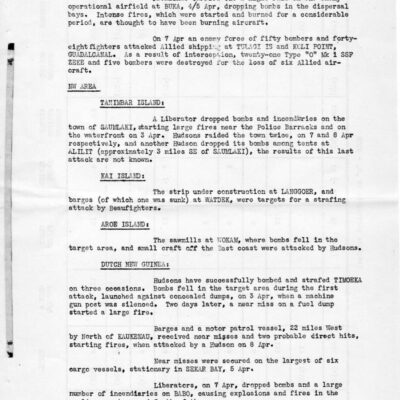
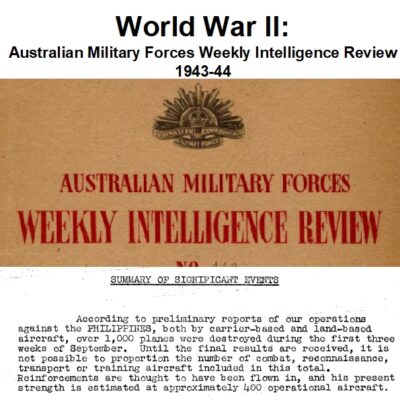
World War II: Australian Military Weekly Intelligence Reports 1943-44
$3.94 Add to Cart -
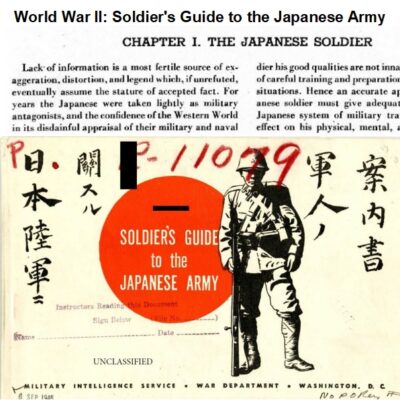

World War II: A Soldier’s Handbook on the Japanese Army
$3.94 Add to Cart -
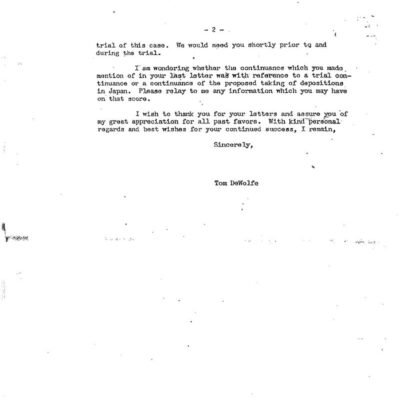
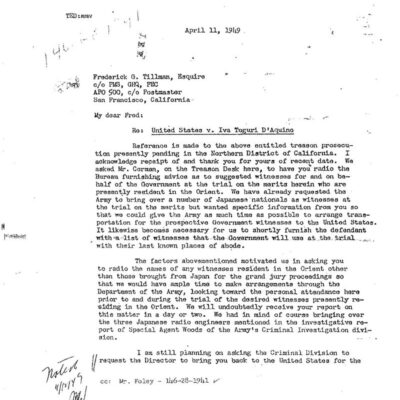
Tokyo Rose: Department of Justice Prosecution Files
$19.50 Add to Cart